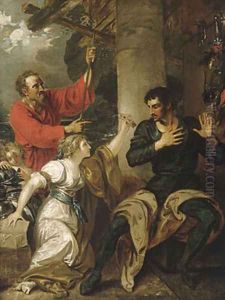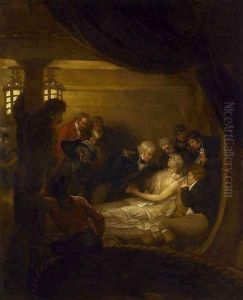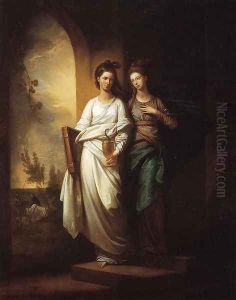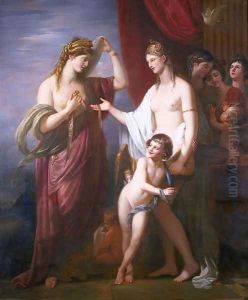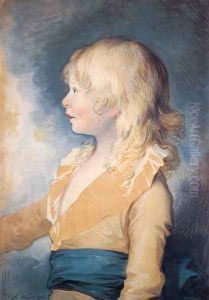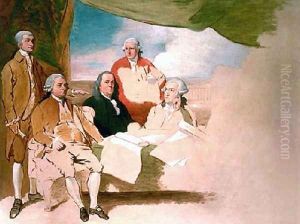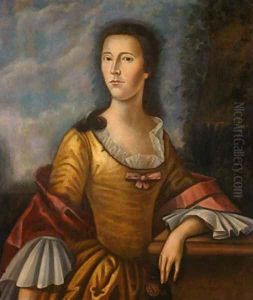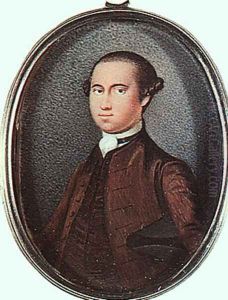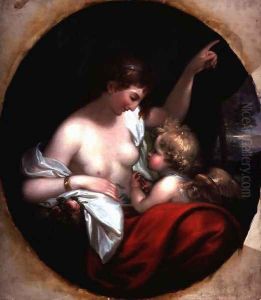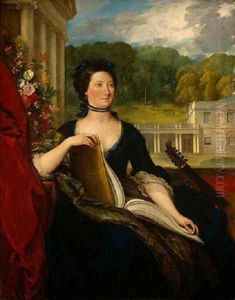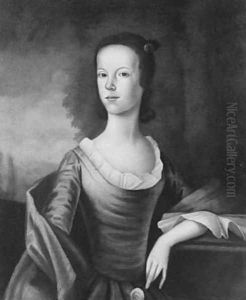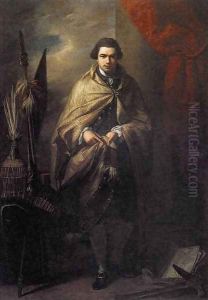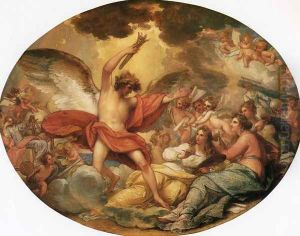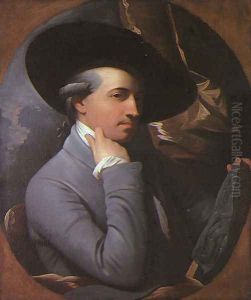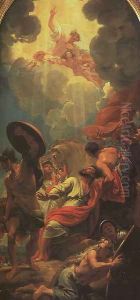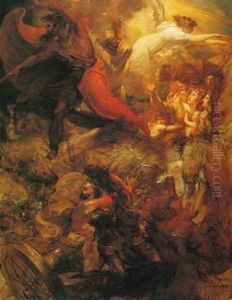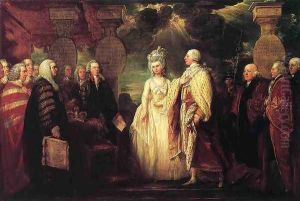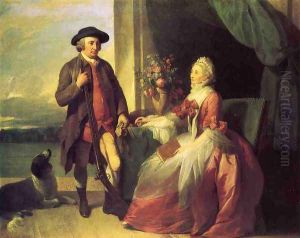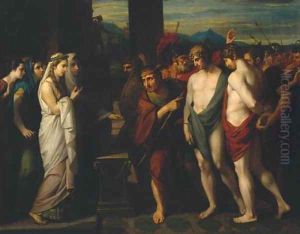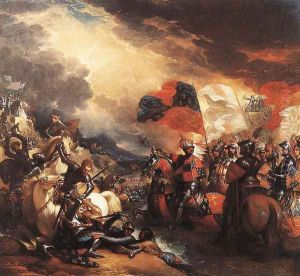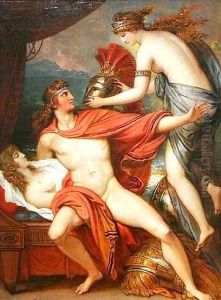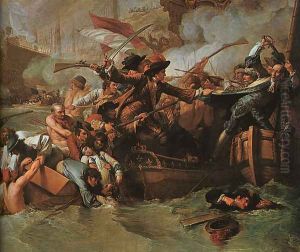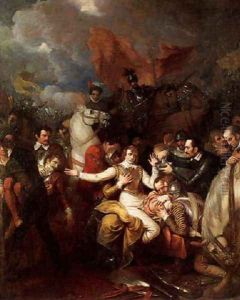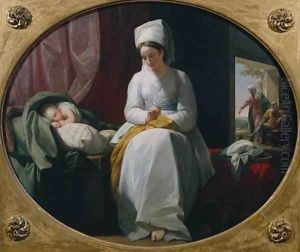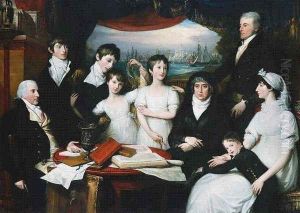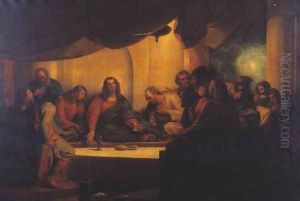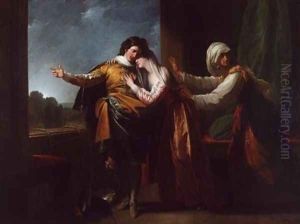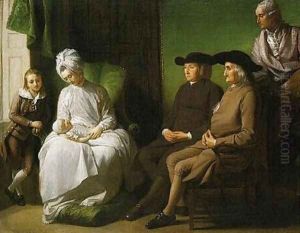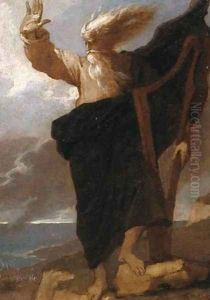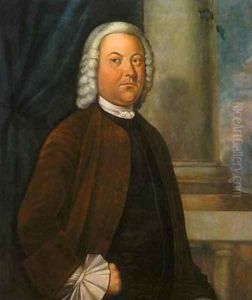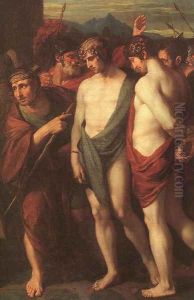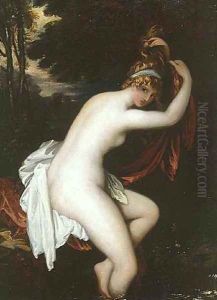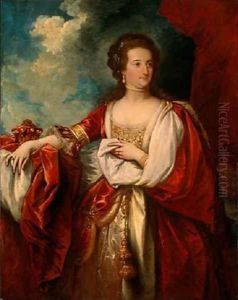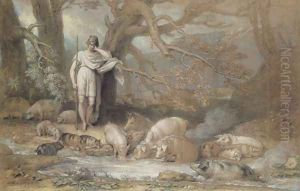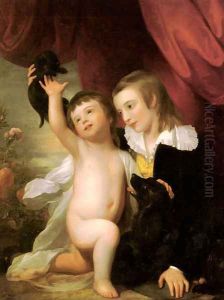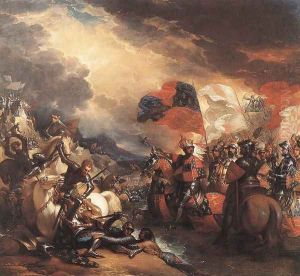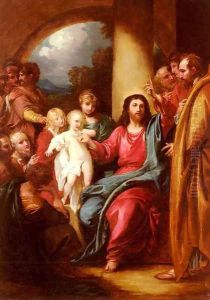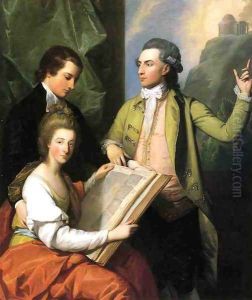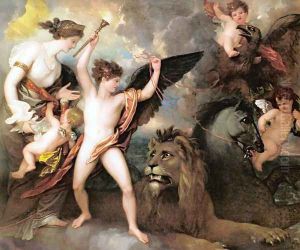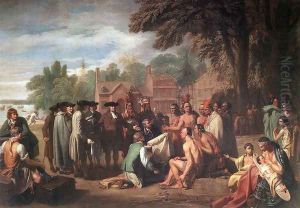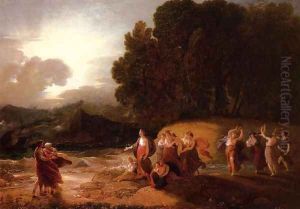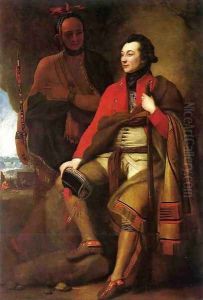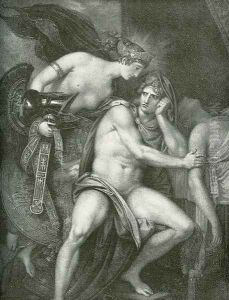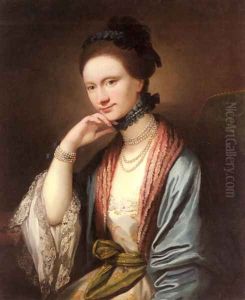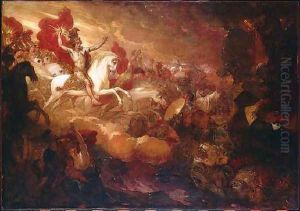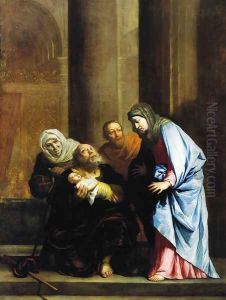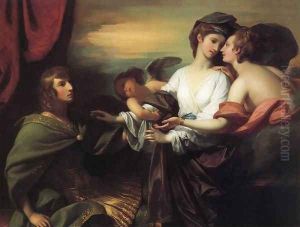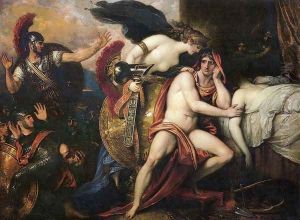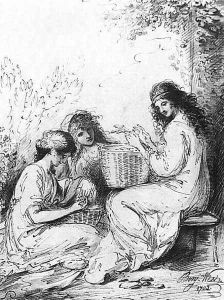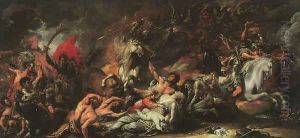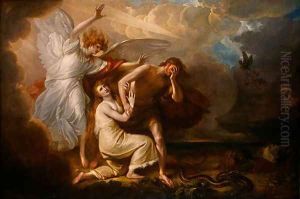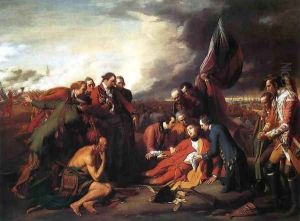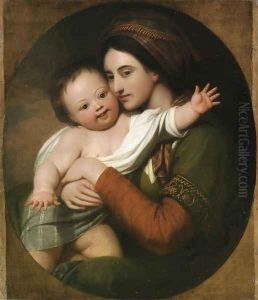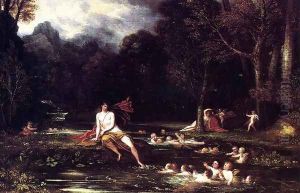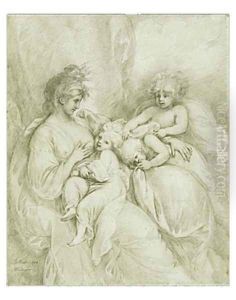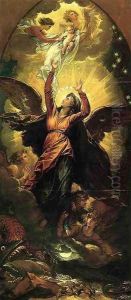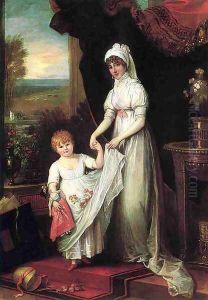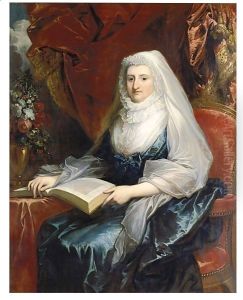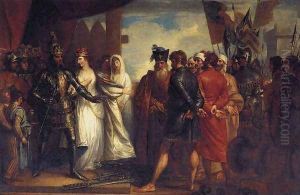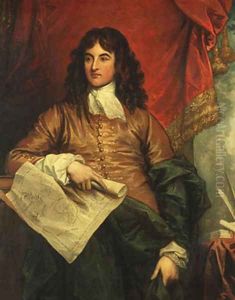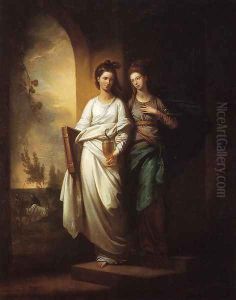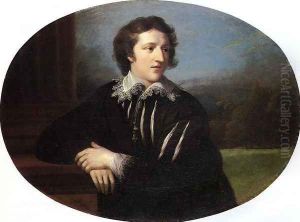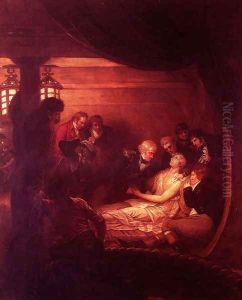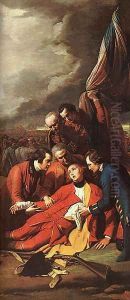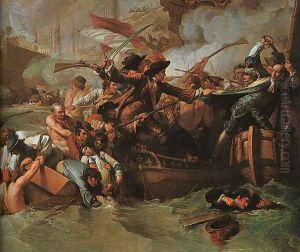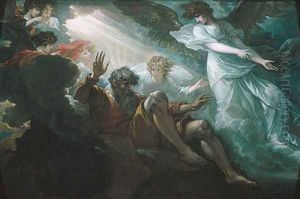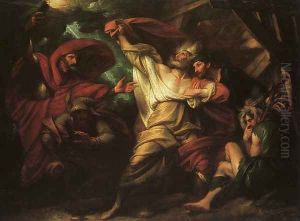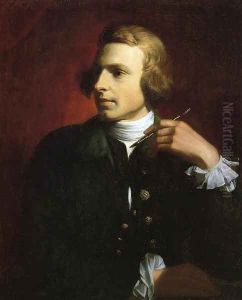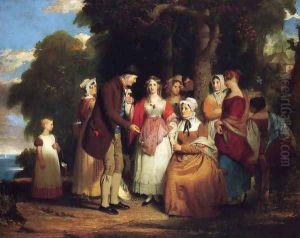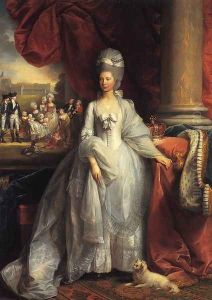Benjamin West Paintings
Benjamin West was a significant figure in the history of art, particularly known for his historical paintings of religious and mythological subjects. Born on October 10, 1738, in Springfield, Pennsylvania, he was the tenth child of an innkeeper and his wife. West demonstrated a natural talent for drawing at an early age, and his abilities were encouraged by the local community, which was quite unusual in a time when the Quaker-dominated region often frowned upon such pursuits.
West's early education in the arts was largely self-taught, although he did receive some guidance from local artists. His first major recognition came when he was commissioned to paint portraits for wealthy patrons in Philadelphia and New York. In 1760, West traveled to Italy, where he studied the works of the Old Masters. This trip had a profound impact on his artistic development, and he immersed himself in the classical traditions of painting.
In 1763, West moved to London, which turned out to be a pivotal decision in his career. He quickly gained favor with King George III and became the second president of the Royal Academy of Arts, succeeding Sir Joshua Reynolds. West's historical paintings, such as 'The Death of General Wolfe' (1770), were groundbreaking in that they depicted contemporary events in the style of history painting, which was traditionally reserved for classical and biblical subjects. This innovative approach helped to establish a new genre of art that became known as 'modern history painting.'
West continued to be a prominent figure in the London art scene, producing a vast body of work that included religious subjects, portraits, and history paintings. His influence extended to the next generation of artists, including the American painter Gilbert Stuart, who is known for his portraits of George Washington.
Despite his success in Britain, West never forgot his American roots and maintained a strong identity as an American artist. In 1815, he was offered the presidency of the newly founded American Academy of the Fine Arts in New York but declined due to his advanced age and commitment to the Royal Academy in London.
West died on March 11, 1820, in London. His legacy as a historical painter and his role in shaping the artistic institutions of his time have made him a notable figure in both American and British art history.
